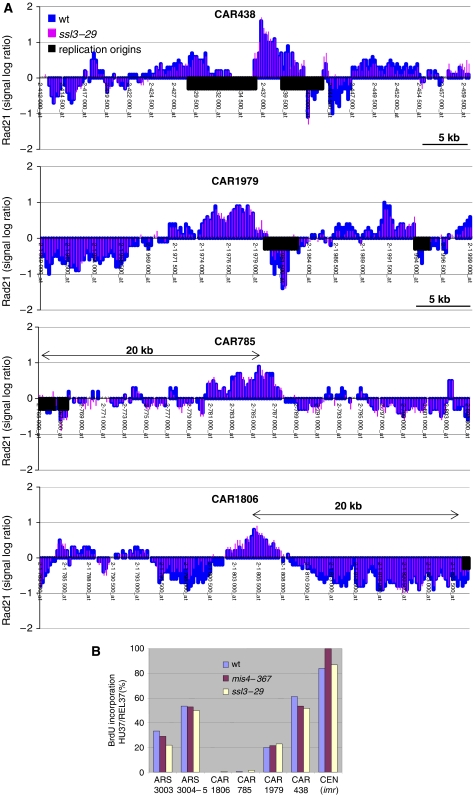Figure 5.
Rad21 stabilization occurs independent of DNA replication. (A) Wt and ssl3–29 cells bearing rad21-HA were arrested in early S-phase by hydroxyurea (HU) treatment at 25°C and then shifted to 37°C for 3 h in the presence of HU. Rad21-HA binding to chromosomes was assessed by ChIP and hybridization of the chromatin immunoprecipitate to oligonucleotide tiling arrays covering chromosomes 2 and 3. The data sets from the two strains were merged to facilitate comparison. Intergenic regions containing replication origins known to fire in HU (Heichinger et al, 2006) are depicted as black boxes. Four regions of chromosome 2 are shown as an example. (B) Determination of the replication status of selected loci in the HU arrest. Cells were arrested in G1 by nitrogen starvation and released into the cell cycle at 25°C in the presence of HU and BrdU. After 2 h at 37°C (HU37), HU was washed out and cells were allowed to resume replication for 1 h in the presence of BrdU (REL37). Replicated DNA was immunoprecipitated using anti-BrdU antibodies and quantified by real-time PCR. The extent of DNA replication in the HU arrest at 37°C is given by the ratio HU37/REL37.

